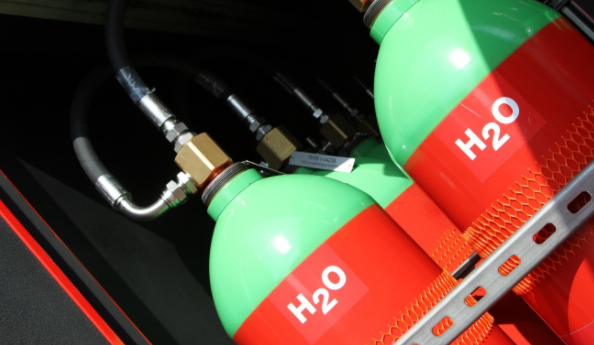The threat of fire is an ever-present part of modern wind farm operations. As such, installing a fire suppression system in your wind turbines can create a safer environment and help mitigate negative cost impacts that results from an event of fire.
Depending the size of the nacelle, the type of environment where your installation is in, among other factors, several options are available for you to choose for your turbines. Below you will find a short description of some of the options:
Water Mist Systems
Water mist systems force water at a high pressure through nozzles thus creating an extremely fine mist of droplets under 1000 µm in size. This water mist suppresses fire by reducing heat, displacing oxygen, and controlling the fuel source by wetting and cooling the surrounding fuel surfaces.
The water mist system can be fully integrated into the nacelle, using a compact pump unit which gives it a weight reduction and allows for installation in smaller spaces.
CO2 Systems
Carbon Dioxide (CO2) systems work by flooding the room with CO2 gas that supresses fire by displacing the ambient oxygen level. CO2 is a colourless, odourless, and electrically non-conductive gas that leaves no residue behind. This means that any sensitive equipment that is in the protected space will not be damaged by the CO2. As offshore wind turbine nacelles are airtight in order to prevent corrosion, CO2 becomes a viable option for fire suppression.
However, due to the dangers of CO2 to humans, extra precautions such as additional life safety devices, training, and safety protocols are needed when choosing CO2 as fire suppression. These precautions could consist of personnel training about the system, installing pre-discharge alarms, and setting a pneumatic time delay.
Clean Agent
Like CO2 systems, clean agent systems make use of inert gas or chemicals that are stored in a container that will be discharged when a fire is detected. Clean agents suppress fire by eliminating either the heat element or the oxygen elements of the fire. The most common agents are Inergen, FM-200 and Novec 1230.
These systems are all non-toxic, and do not reduce the oxygen level to an unsafe level. Additionally, only very little space is required for the cylinders containing the clean agent. As per its name, no clean-up is required as no residue is left after the discharge of the clean agents.
Aerosols
Aerosol firefighting systems employ a combination of air/inert gases with solid microparticles that suppress fire. The primary extinguishing mechanism of aerosol systems involves chemically interfering with the free radicals in the fire zone – it simply interrupts the chain reaction of fuel, oxygen, and heat in a fire.
Aerosol solutions may be suitable for a wind turbine nacelle because it is lightweight; most aerosol solutions are “stand-alone” as they do not need pipework or pressurised cylinders to work.
Semco Maritime Ltd. are happy to help you choose a system according to your needs and requirements. Which firefighting system is most suitable for you depends on a variety of factors, such as the specific set of standards that your wind farm needs to comply with, the type environment and much more. Our in-house specialist are here to talk about any potential firefighting solutions.
For more information, click here
